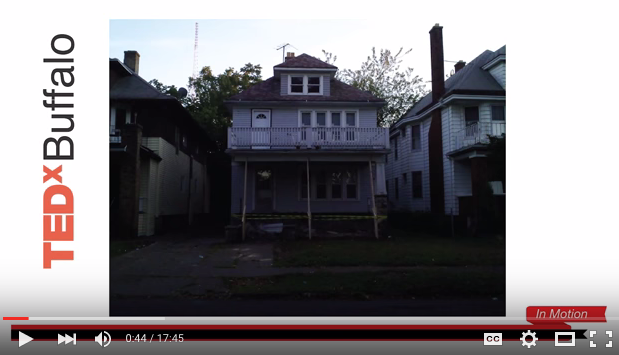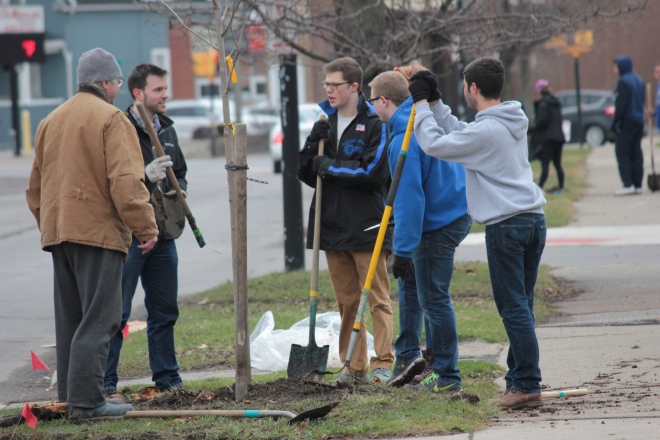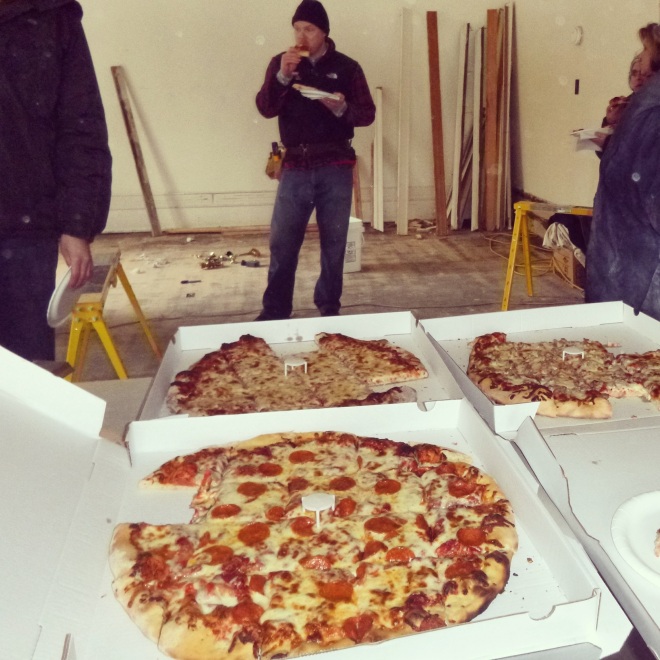
Renea, a single mother living with her four children and ailing father finally won her home after living without water for six months. She is a first time homeowner who rented this house for seven years from a slumlord who didn’t pay the taxes. She wanted to stay in this home because it’s her only chance for ownership, and she isn’t afraid of the hard work – she’s grateful to have a path to make her investment pay off in the long term. Photo Credit: Emilie Evans.
Sometimes, the hardest part of being a homeowner isn’t coming up with the funds to buy a place, but ensuring that once you own it, the roof actually works and the electrical wiring doesn’t barbecue your belongings. There are tens of thousands of vacant and neglected properties across the U.S., and at least as many people in need of stable housing — many simply need help navigating the challenges of acquiring and fixing up these places.
Brick + Beam Detroit and the Tricycle Collective are two organizations helping folks in need of safe, stable living situations by helping them become first time homeowners with the skills and resources they’ll need. Last month, The ToolMade Project and Craftsman jumped in to help put some tools into these new homeowners’ hands.

Kits full of homeowner tool essentials were given to six families in Detroit. Skip to the end of this article to see a list of the tools and a guide I put together with Emilie Evans of Brick + Beam Detroit to give some overall tips. These homeowners have a lot of work ahead of them, but are beyond excited to get to it. Photo Credit: Emilie Evans.
Let’s be real — nobody is born knowing how to sand and seal floors, repair wooden windows, and ensure that their adorable toddler isn’t ingesting lead paint chips like they’re Corn Flakes. That said, with an extensive and creative support system (full of people who can laugh and vent about the occasional catastrophes that come with rehabbing a home), anybody can learn.
The founders of Brick + Beam Detroit have created a community for building rehabbers of every skill and income level by hosting events, creating an extensive online platform, and sharing resources, stories, and whatever else is needed to help people to make their homes safe and comfortable. If homeowners are taught how to improve inexpensive, well-built, yet rundown properties, then the owners, the neighbors, the city…well, really, everybody wins.

Charmelle lives with her mother and her 2-year-old boy. Her mom owned the house, but struggled to pay her property taxes and eventually lost it. The Tricycle Collective is now working to help Charmelle get her family house back so they can all stay together in the community they call home. The Craftsman tools and support from Brick + Beam Detroit will help to fix up and maintain their investment. Photo Credit: Emilie Evans.
For this project, Brick + Beam partnered with the Tricycle Collective to target families who were recently able to buy their own homes—homes that needed a lot of TLC. The Tricycle Collective works to help people renting from delinquent landlords to buy the properties they are currently inhabiting. There is a huge problem with absent landlords neglecting to pay the necessary taxes and bills, leaving their renters without basic services or security.

Cassandra and Alex have three children and live across the street from Alex’s mom. They rented this home for years, and were thrilled to be able to finally buy it and have control over their space. And, of course, the kids love being across the street from grandma. Photo Credit: Emilie Evans.
In Detroit, renters have the option to buy their homes—for less than the cost of their rent—if the home goes to auction due to tax foreclosure. As Michele Oberholtzer, founder of the volunteer-run Tricycle Collective explains:
“People are often forced out of the city they’ve always lived in and it doesn’t need to be that way. A lot of Detroiters are caught in a cycle of eviction and deferred maintenance because of neglectful landlords. They have little stability as a result. On top of that, the actual houses deteriorate every time someone moves and it’s left vacant because houses often get scrapped. We spend more money demolishing homes when they’re vacant than we would just paying back taxes. It’s maddening. Homes without people and people without homes. There is an alternate fate if [these renters] just have a little more information.”

Tiffany, a single mother of four, lives with her children and mother. The house has a leaky roof and needs a lot of work, but they are happy to have their own place, some stability, and numerous resources to help them fix up their home. Photo Credit: Emilie Evans.
In addition to helping renters navigate this process, the Tricycle Collective has fundraisers to help raise the actual funds needed to buy the auctioned homes, which often only cost around $500. Yes, a mere $500, combined with free rehab resources like those offered through Brick + Beam, and some elbow grease can end a cycle of instability and potential homelessness for thousands of families and individuals. Inspiring stuff.

Crystal is a first time homeowner who works for the City of Detroit and has two sons. She was paying rent to a landlord who neglected the property and didn’t pay the taxes. Once her landlord lost the property, Crystal was able to buy her home for just $500 – the cost of a single month’s rent. This has freed up finances and allowed her to take matters into her own hands. Photo by Emilie Evans.
To read more about Brick + Beam Detroit’s unique and powerful rehab community, check out the article I wrote about them last month here, and visit their website. For more information about the families impacted by the heroic work of the Tricycle Collective, click here.
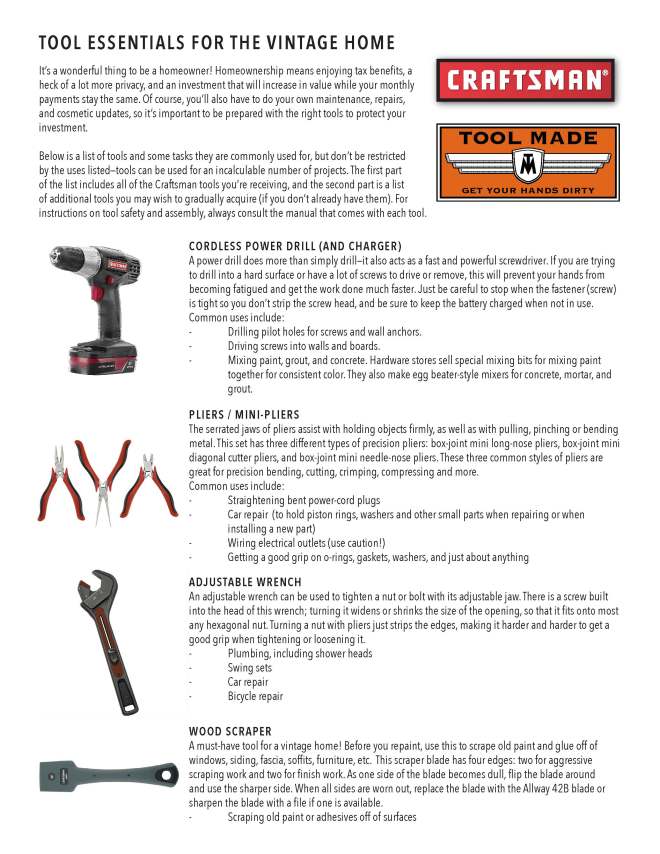







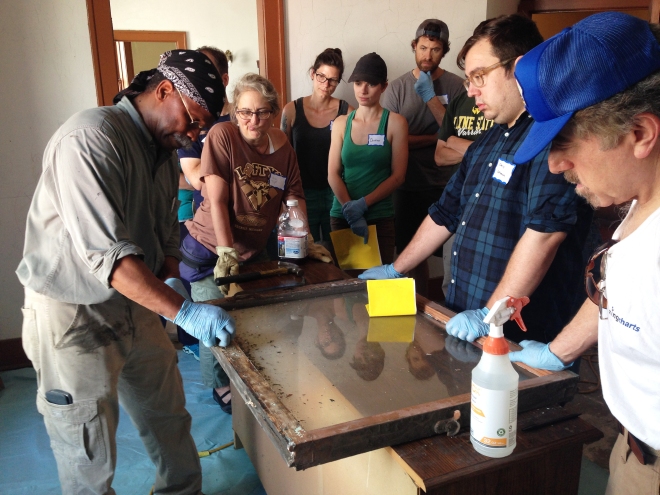
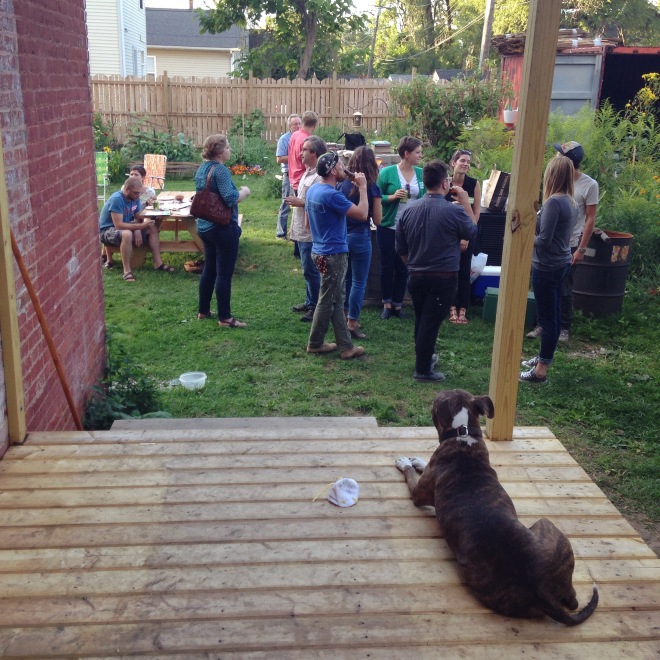

 *Note: Darren did such an amazing job summarizing the importance of these resources that many of the words in this post are his own. Thanks for making life so easy for both the people of Buffalo and also a gal in Chicago, Darren. All pics are of projects completed using the Tool Library’s resources.
*Note: Darren did such an amazing job summarizing the importance of these resources that many of the words in this post are his own. Thanks for making life so easy for both the people of Buffalo and also a gal in Chicago, Darren. All pics are of projects completed using the Tool Library’s resources.